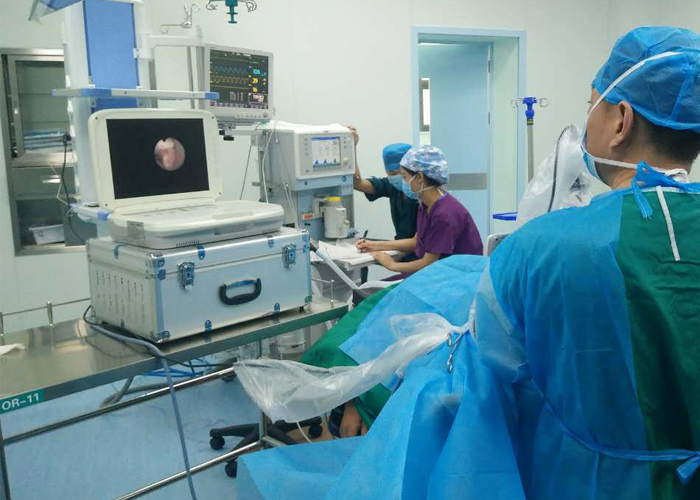Ureteral calculi is a common urological disease. Because of the occurrence of stone incarceration and accumulation of water, the patient will suffer unbearable pain and block infection. Ureteroscopic holmium laser lithotripsy for the treatment of ureteral calculi is a relatively advanced stone. Treatment technology.
What is ureteroscopic holmium laser lithotripsy?
Ureteroscopic holmium laser lithotripsy refers to the holmium laser lithotripsy under rigid ureteroscope. It uses a thin mirror with a diameter of about 3-6mm and is gently inserted into the ureter through the urethra and bladder under the guidance of a guide wire. When the ureteroscope reaches the stone, a holmium laser fiber is inserted to break the stone, and then the stone is discharged naturally. Holmium laser lithotripsy under rigid ureteroscope utilizes the natural urinary tract of the human body and does not require surgery. It is a minimally invasive endoscopic surgery.
The steps of ureteroscopic holmium laser lithotripsy:
1. The patient needs to receive general anesthesia. After the anesthesia is successful, the patient's legs need to be raised about 30cm high, and the legs should be separated at an angle of about 90 degrees.
2. Use a ureteroscope to enter the bladder from the urethra and then into the ureter to reach the stone part of the ureter.
3. Place the holmium laser into the body through the ureteroscope, and perform lithotripsy with holmium laser energy under the direct view of the endoscope monitor. The lithotripsy energy is about 25w, and the ureteral stones can be broken by the holmium laser in about 20-30 minutes. The stone is over.
4. After the operation is completed, use a ureteroscope to check the location of the stones to observe whether there are any remaining stones. If there are no remaining stones, the holmium laser and the ureter can be withdrawn to complete the operation.
Ureteroscopy is divided into rigid ureteroscope and flexible ureteroscope, which are used for different parts of the stone. The soft lens body is slender and soft, and is mostly used to treat the upper ureter and upper calyx of the kidney. Rigid scopes cannot be bent and are mostly used to treat stones in the middle and lower ureter. The principles of these two endoscopes are basically the same in operation. They both enter from the urethra, through the bladder, into the ureters and kidneys, combined with holmium laser lithotripsy.
